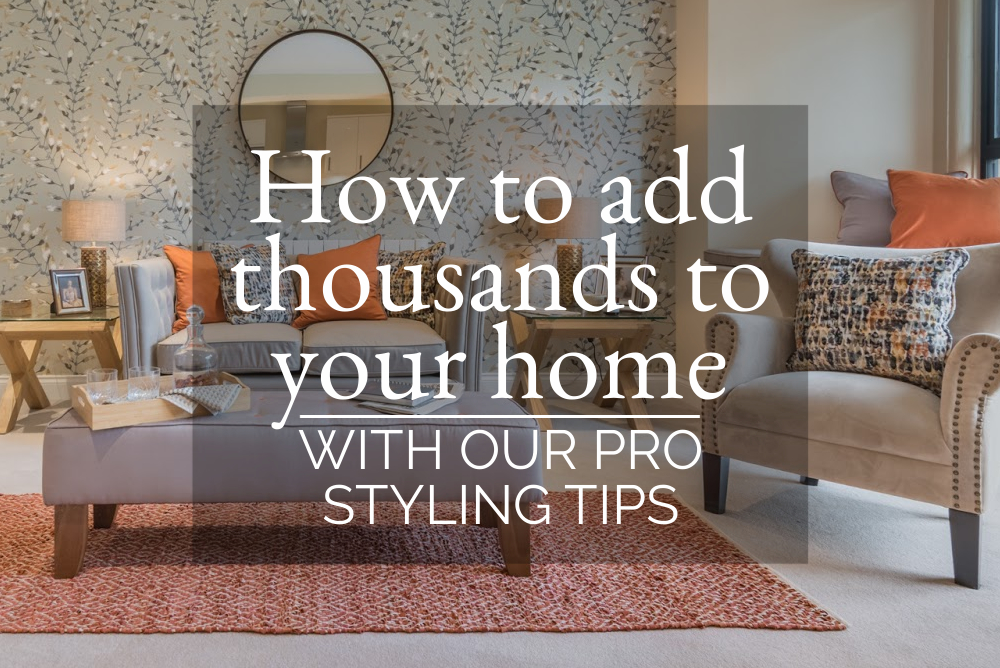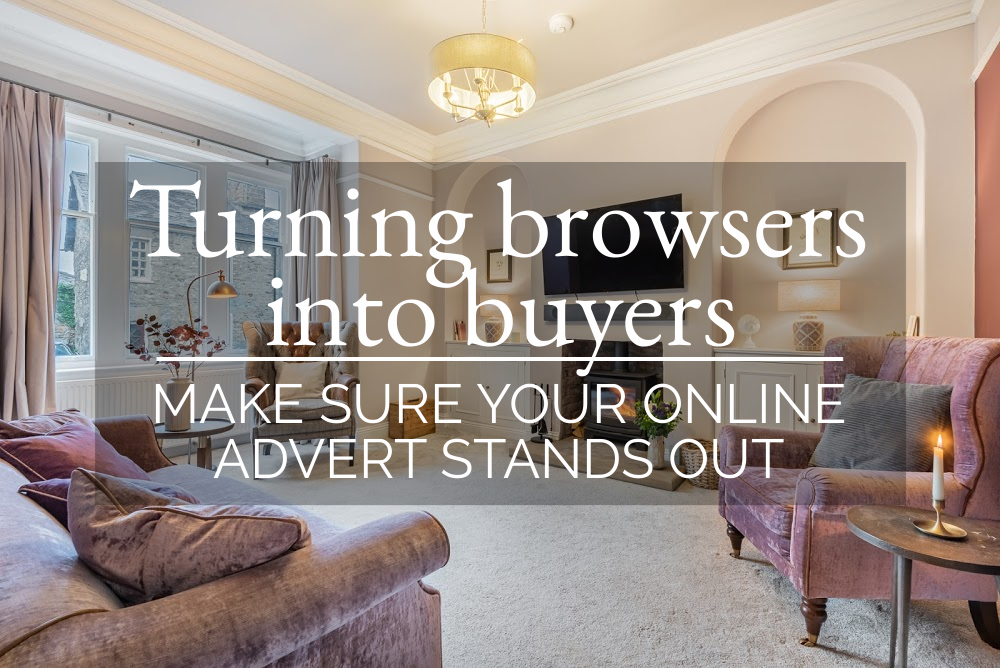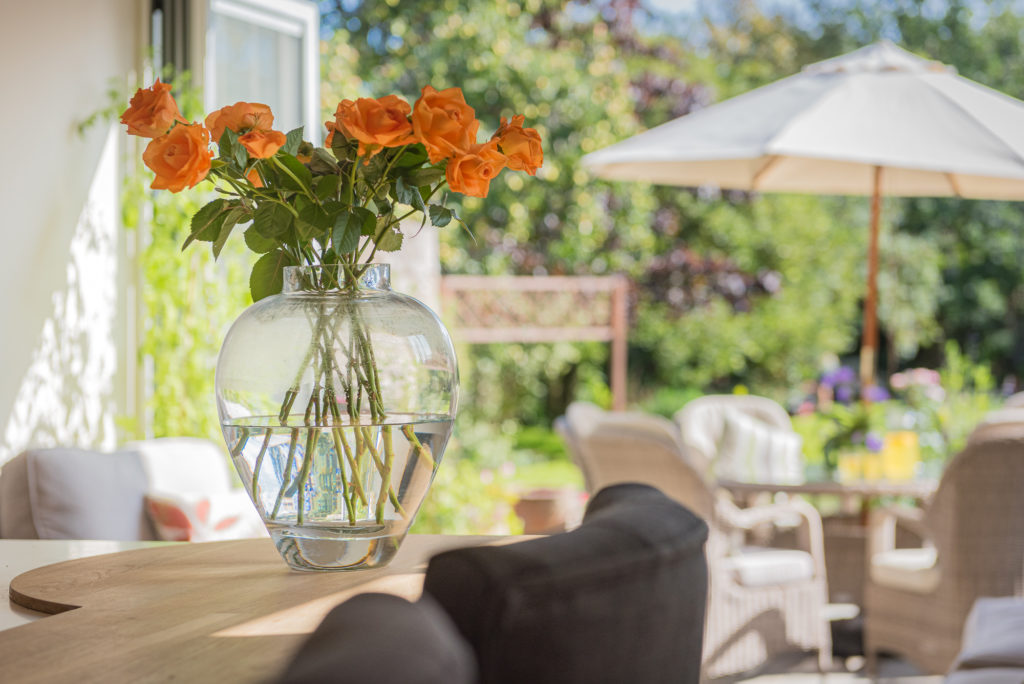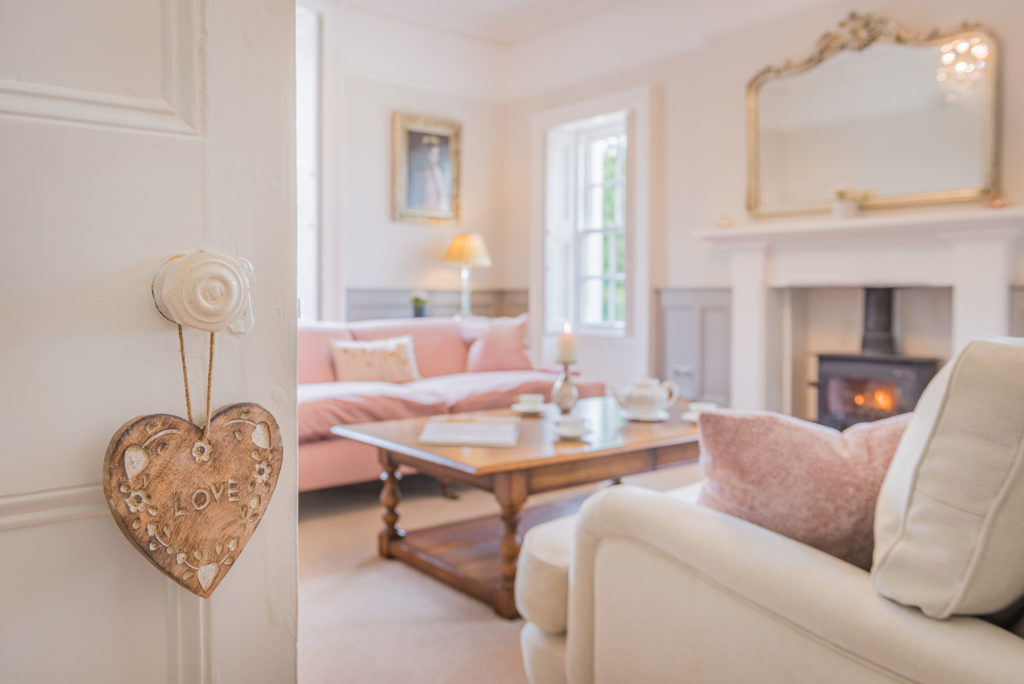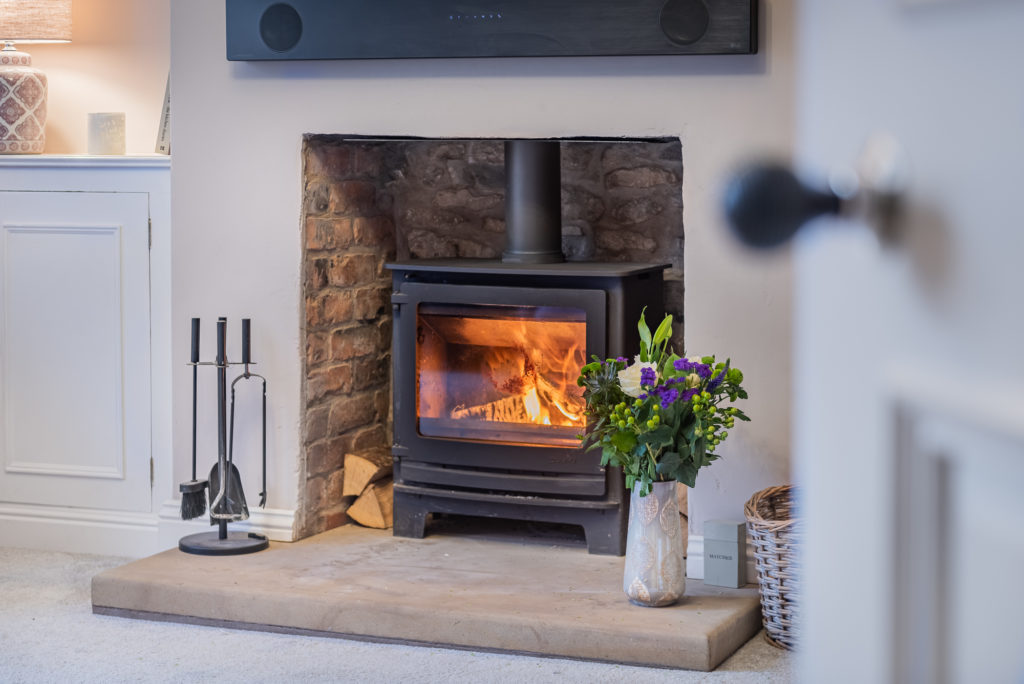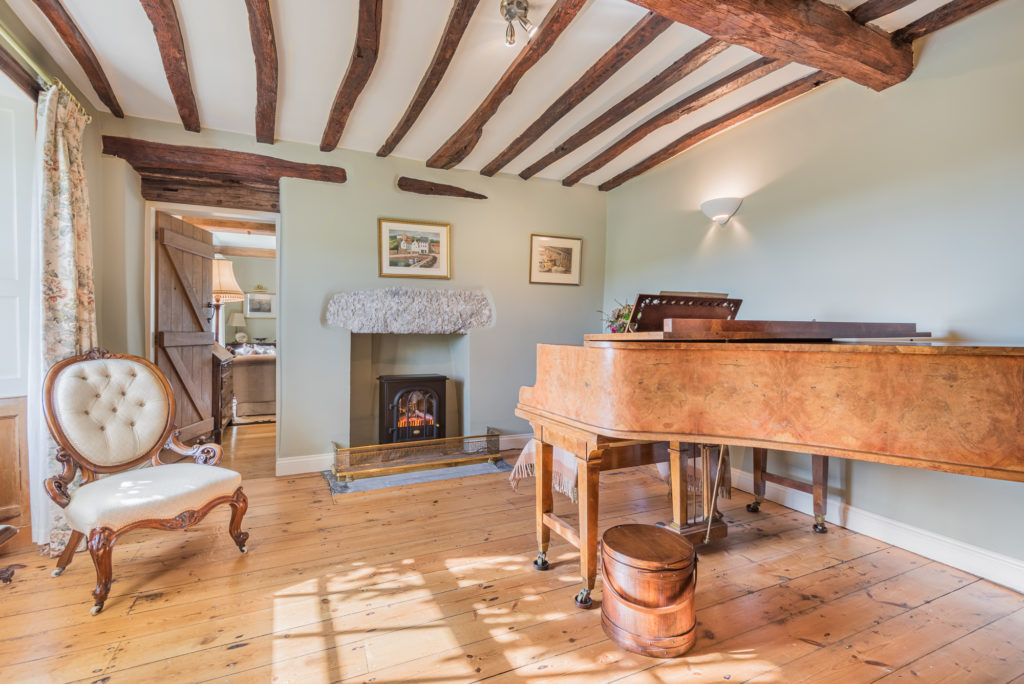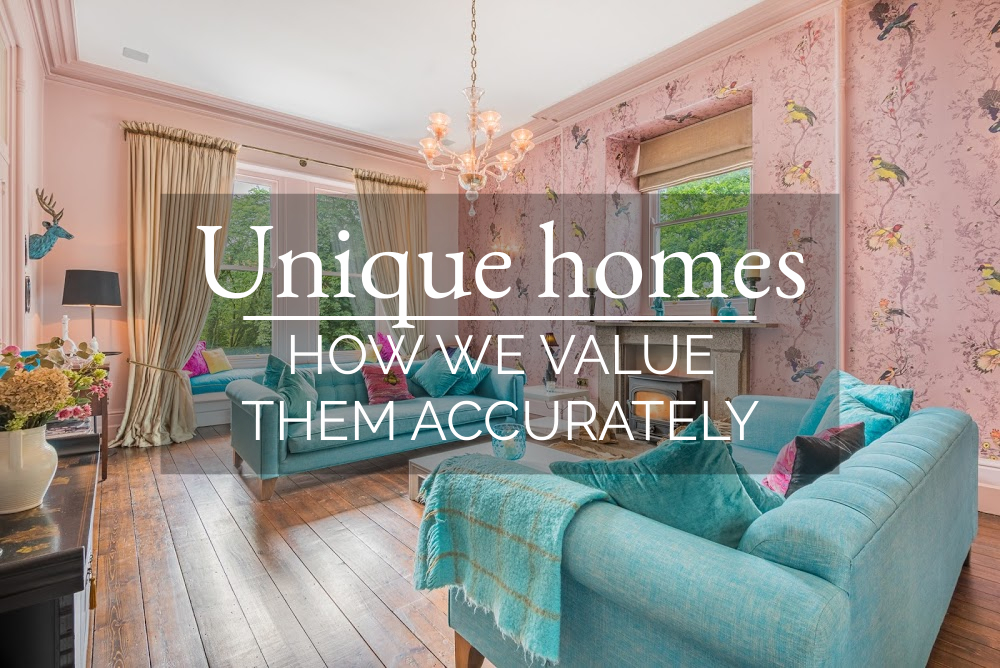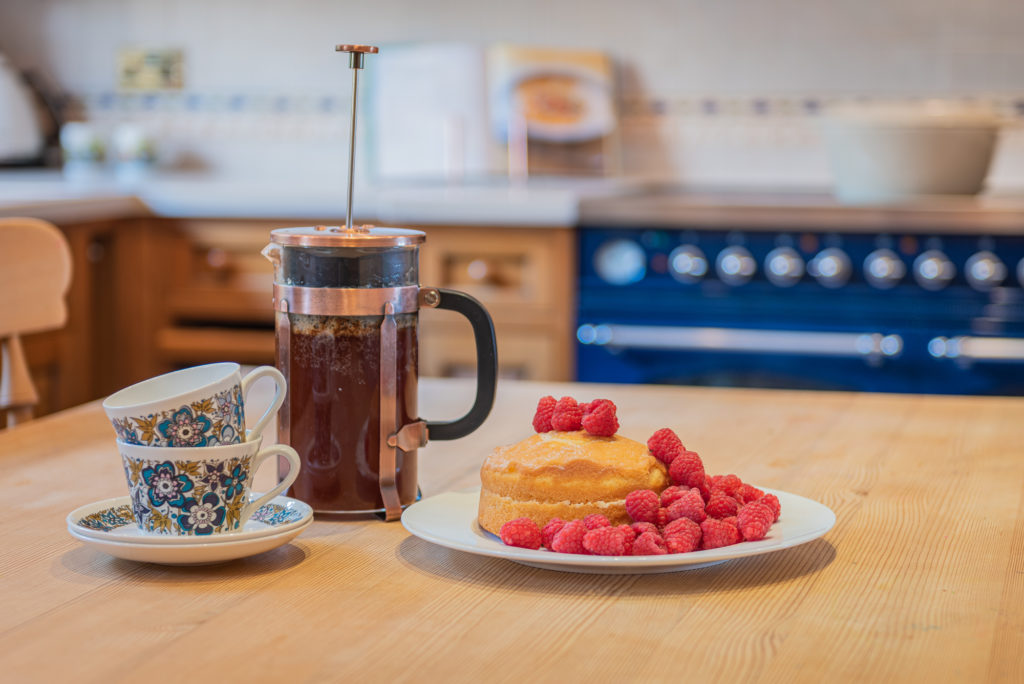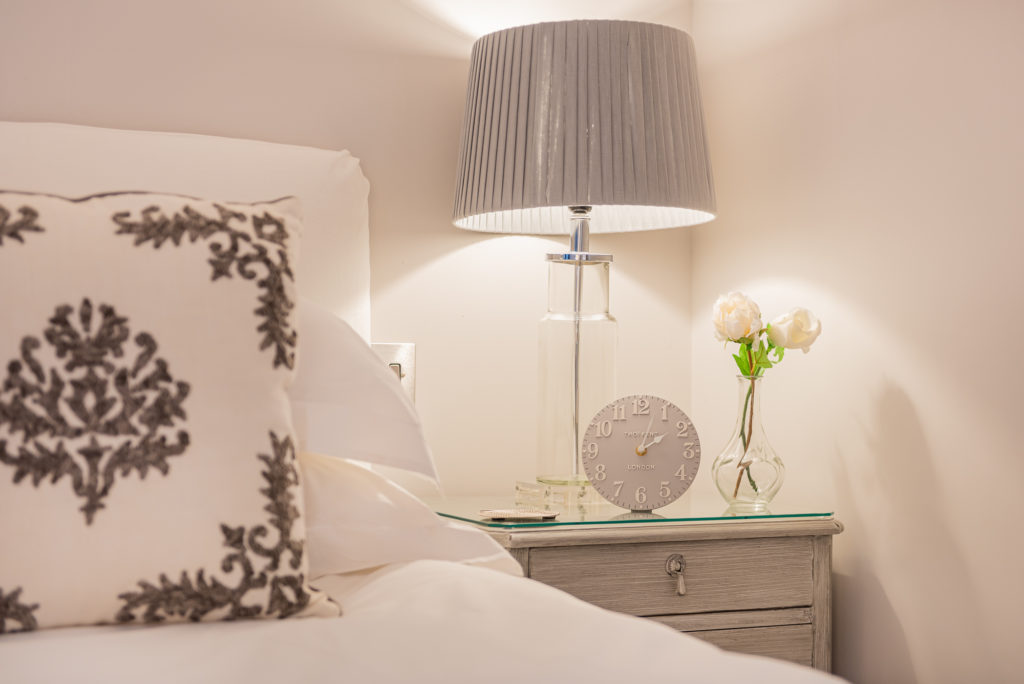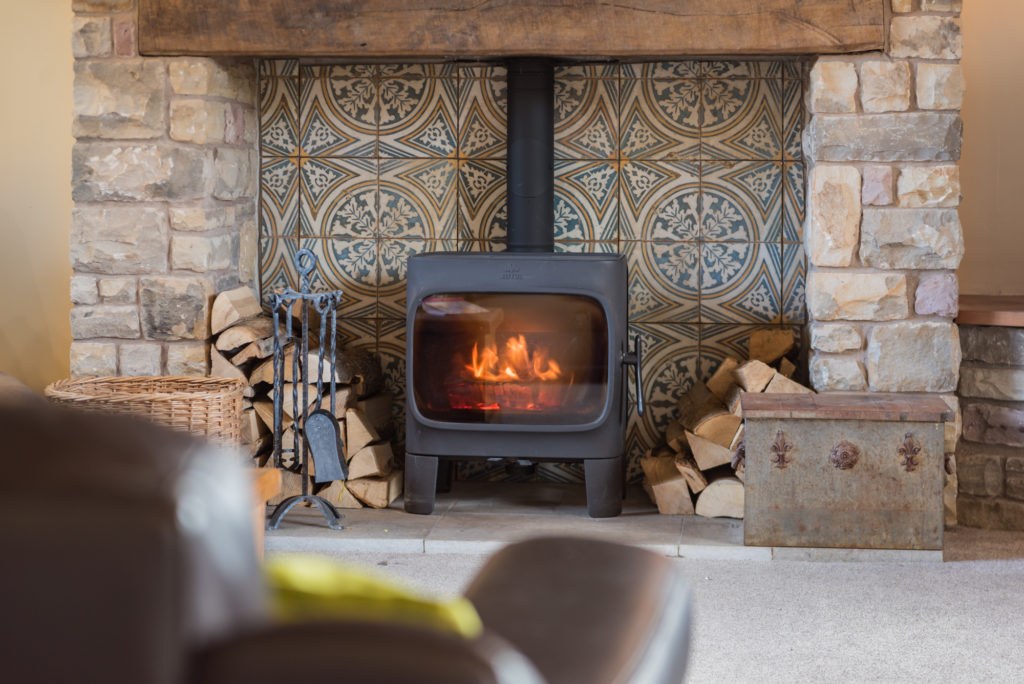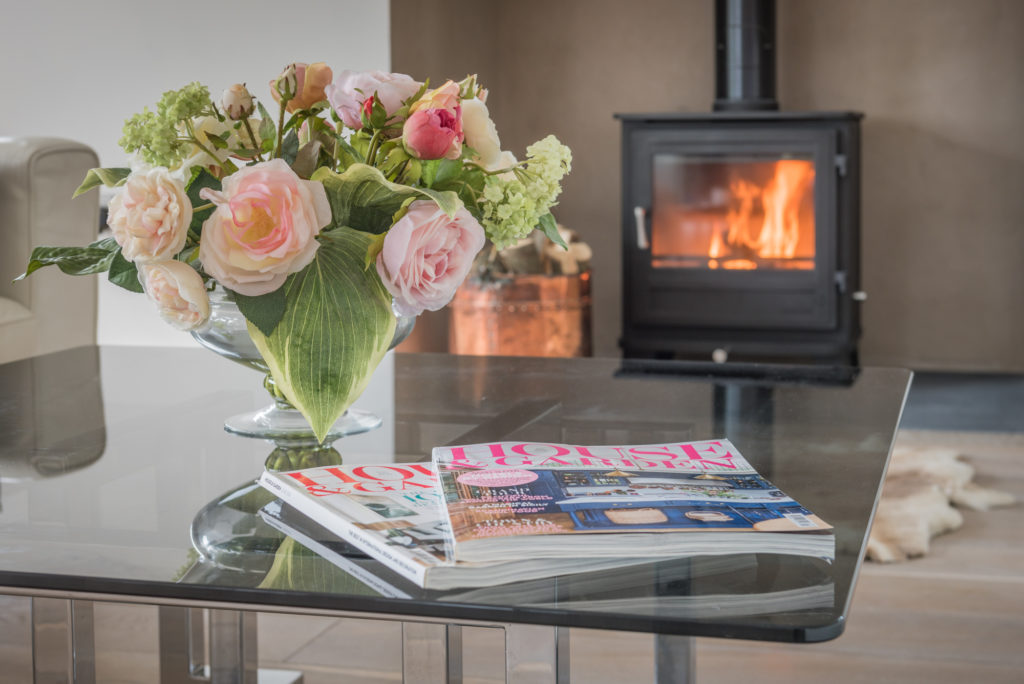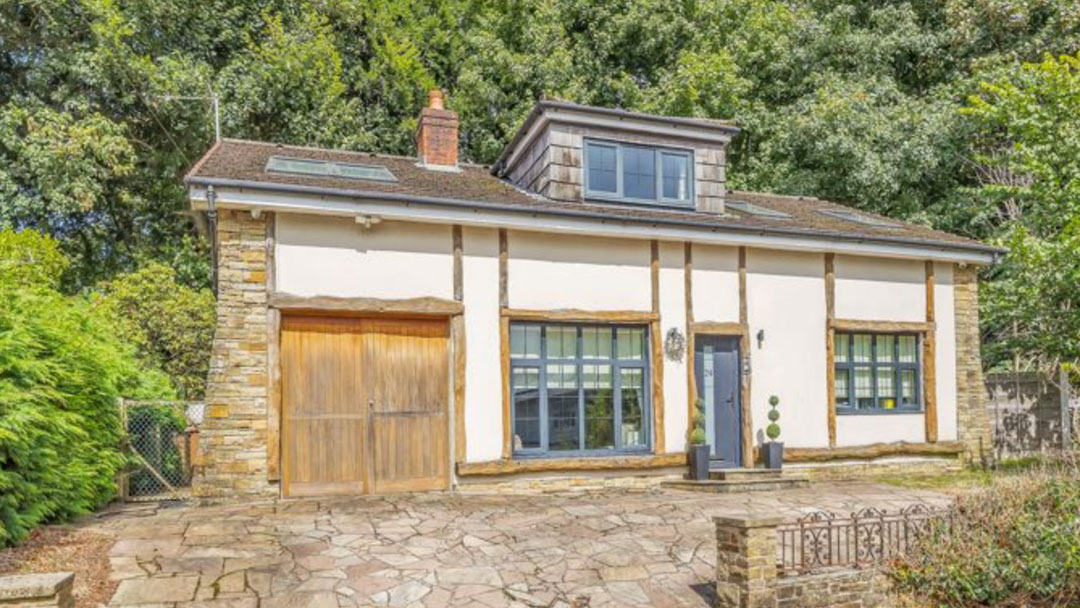One way to add value to your home is by renovating it; another is through increasing the amount of accommodation, by either building an extension or converting something like the loft or a garage to create an extra living room or bedroom.
But if you don’t want to undertake that kind of building work, or you’re not able to because of planning or available space, the good news is, there’s another way you can add value – without calling any contractors!
If you invest some time and can spend a little money simply on the presentation of your home, that can carry a huge amount of weight when it comes to securing a buyer and getting the best possible price. The power of first impressions is the reason we have stylists on our team that work with photographers to create the best possible images for our clients’ marketing brochures.
Research carried out last year by The International Association of Home Staging Professionals found that the majority of homes that had been professionally furnished and styled sold for between 4% and 20% more than the asking price. And we know ourselves that when buyers see a home that’s beautifully presented, showing off every room at its very best and suggesting an aspirational lifestyle, they’re much more likely to see its value and make a strong offer.
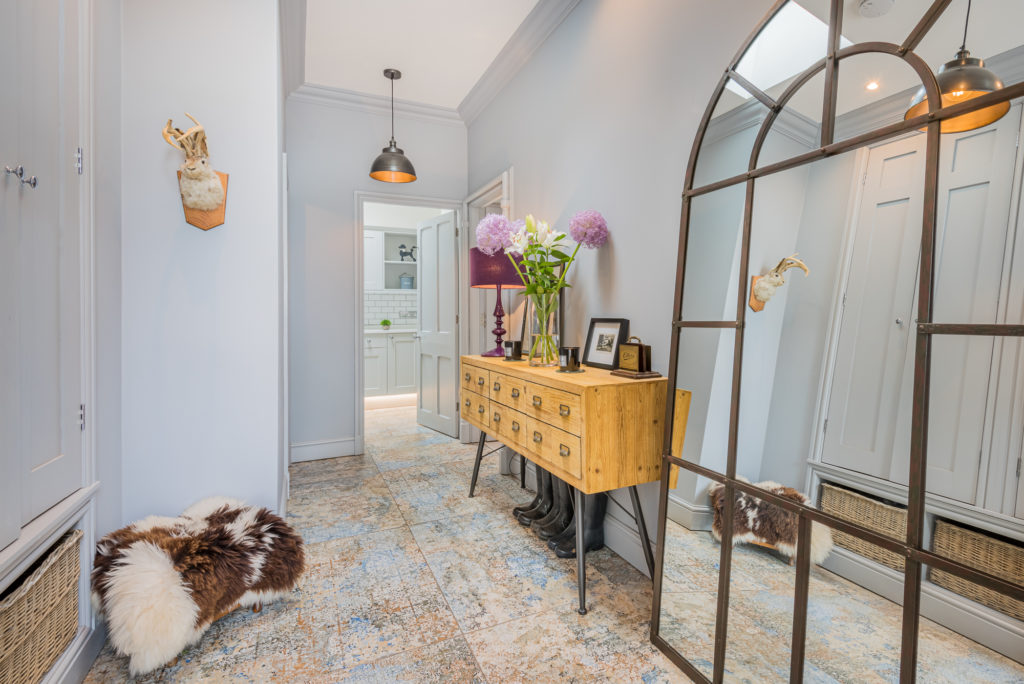
So, here are our top tips on how to style your home so that you add real value. Not only could that mean securing a higher sale price, but you’re also likely to sell much quicker than other comparable homes on the market that are missing that all-important styling touch.
Maximise light and space
The lighter, brighter and more spacious a home looks, the better buyers tend to feel about it. That’s partly a reaction to rooms appearing larger than they expected and partly because you’re showing them that there’s plenty of space to fit in everything they’ll need to enjoy the home.
The first thing to do is tidy and simplify each room so that the interior space can ‘breathe’. You can still have photographs, ornaments and books on display, but just a few of each placed around a room is enough to show some personality, while still allowing buyers to easily visualise their own possessions in the space. If you’d like some advice on what to keep out and what you should put away while your home’s on the market, just give us a call and our stylists will be happy to help.
Once you’ve created more physical space, it’s then a case of using some optical illusions. Well-placed mirrors can transform a home, bouncing light around and giving an impression of depth, which is particularly helpful in narrower rooms and hallways.
And think about the size and orientation of both mirrors and pictures. The human eye naturally scans vertically before horizontally, so wall hangings with a ‘portrait’ orientation will give the impression of more height in a room. It’s also generally true that larger pictures tend to make rooms feel bigger than if you have clusters of smaller ones. If you don’t already have any larger pieces of artwork, there are many companies that will print images on canvases in a variety of sizes, very cost-effectively. Look through your favourite photographs – something like a unique shot of an attractive landscape can make a stunning feature in a room.
You can also emphasise the size of a room by having something that immediately draws the buyer’s eye to the furthest point from the doorway. That could be a particular piece of furniture, a large plant or a striking piece of art – just something that catches their eye as soon as they walk in. The same trick can be used outside, so that people are immediately encouraged to look down the garden, whether that’s to a lovely seating area or a brightly-coloured shrub.
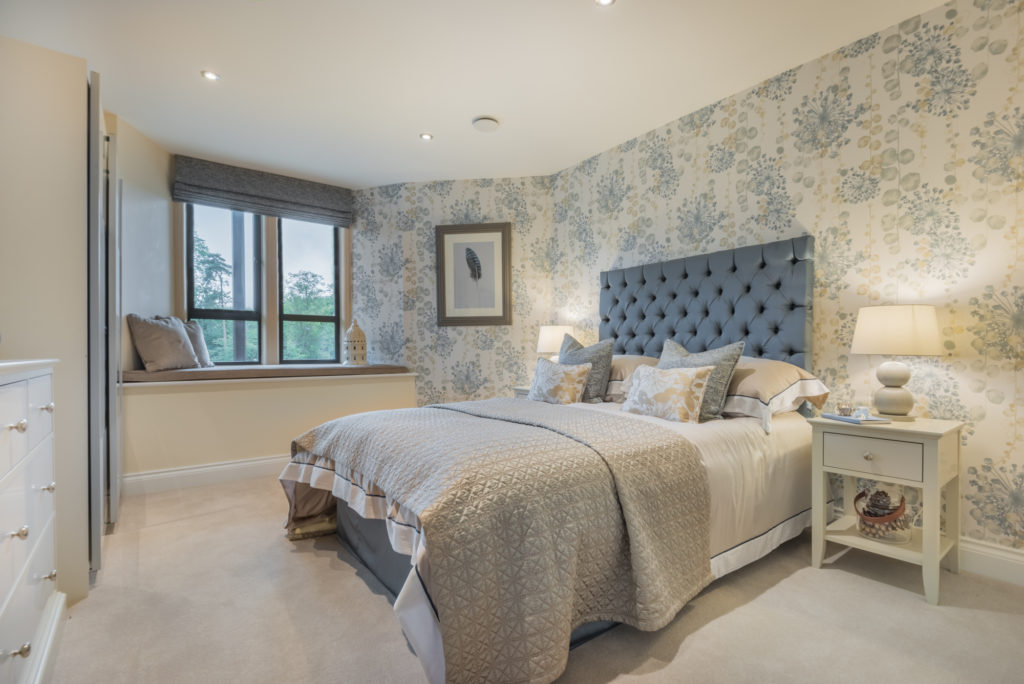
Furniture
Given that a home is often the most expensive purchase many people will make in their lives, you’ve got to show that every bit of space they’re paying for is valuable, which means furnishing and styling rooms so that they have a clear purpose.
We find one room that often falls into the trap of looking a little like wasted space is a conservatory. So, if you have one, style it clearly as a peaceful sitting room or a light and airy dining room. Another common challenge is the smallest bedroom. No matter how tight the space, it’s important to style it so it’s functional, so set it up as either a single room or a study. For buyers who work part-time from home or maybe run their own small business, an office space can be just as valuable as a third or fourth bedroom and can make then feel as though they’re getting more for their money.
And make sure you allow furniture to ‘breathe’. In an effort to create more space, some people make the mistake of pushing furniture into the edges and corners – particularly in bedrooms – when this actually has the opposite effect. Spacing the furniture out a little will let buyers see that there’s plenty of room for it to fit properly, without feeling cramped.
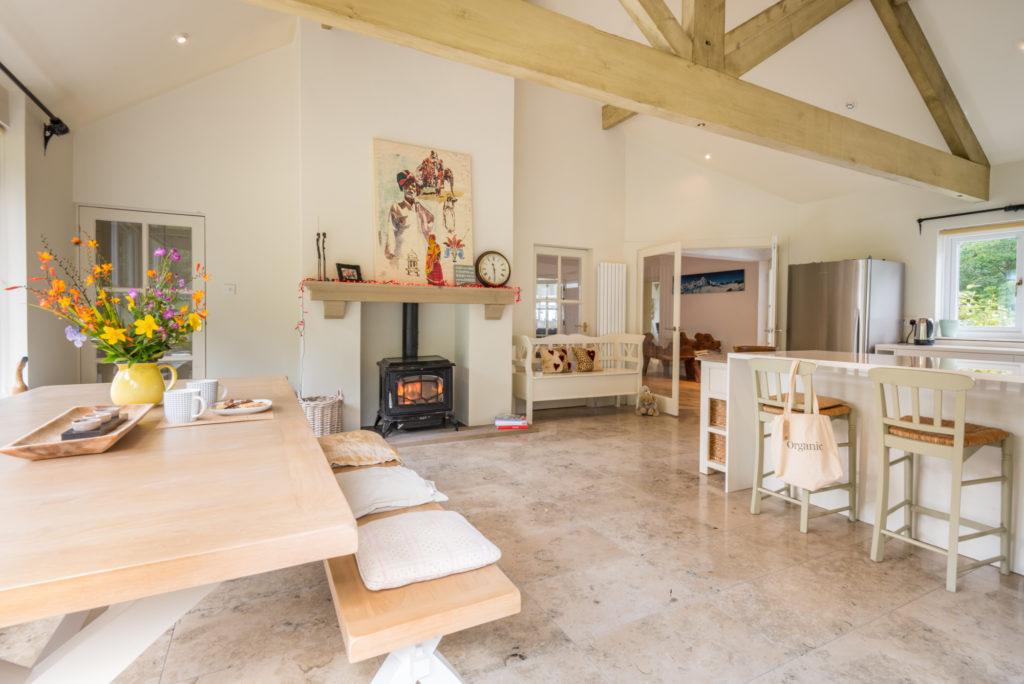
Add warmth and colour
While light, neutral décor is certainly attractive to buyers as a basic canvas for your home, make sure you then brighten it up and add some personality with soft furnishings.
Pick a colour scheme for each room and put a few textured cushions and throws on chairs and sofas. You can go for a touch of glamour with velvet or fur, but limit the number and variety of accessories, otherwise it can start to look confusing. The idea is to add a splash of colour and interest, while not intruding on the overall impression of light and space.
Rugs can add warmth to wood or tiled floors and tend to work well in larger rooms. Generally speaking, try to avoid breaking up the flow of the flooring in smaller rooms and keep the number of accessories in proportion with the size of the space. A good rule of thumb is no more than one cushion for every seat and a maximum of two items on any surface.
Finally, make sure you have plenty of lamps around your home. They cast a much more flattering light than overhead fittings and can make rooms feel warm and welcoming, even on a dull day. Don’t forget to have some lighting outside, if possible, particularly if you’re accepting viewings in the evenings. Some solar-powered lights throughout the garden can also create a pretty effect and help make a memorable impression on buyers.
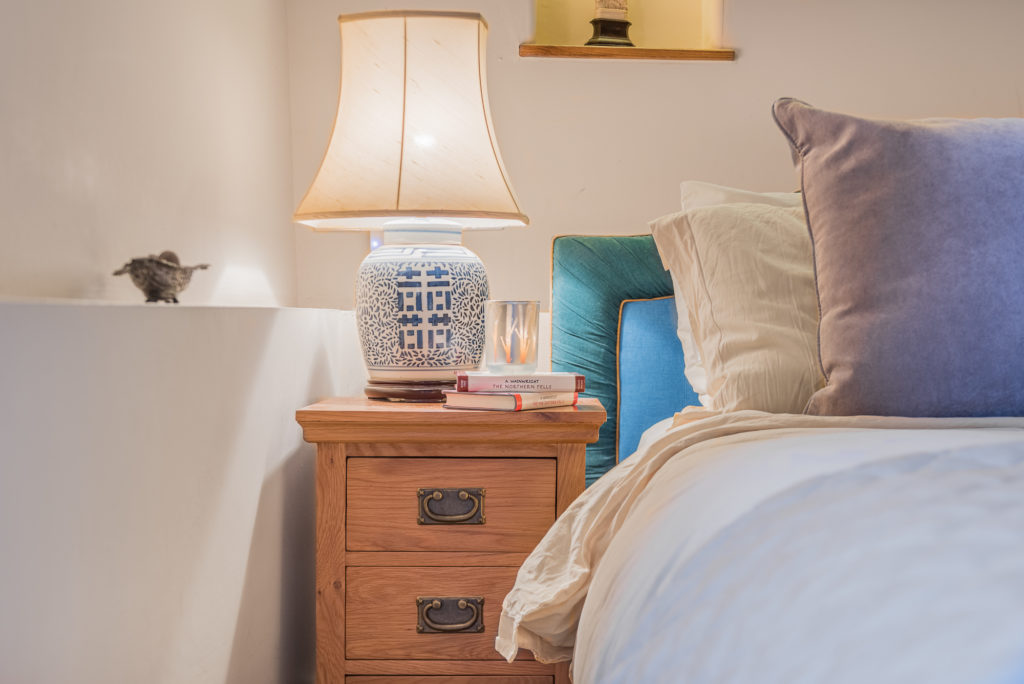
Lifestyle touches
When you’re selling your home, you’re selling a lifestyle, and if you can show people that you enjoy the space in a way that also appeals to them, it’ll encourage them to picture themselves there. And the more ‘at home’ they feel, the more likely they are to make a great offer.
The key is to pick the kinds of accessories that you see in aspirational magazines and boutique hotels, that buyers can easily recognise and identify with. Candles are a really simple and effective way of creating a welcoming atmosphere and, although you don’t have to light them all, some softly-scented candles in the main reception room and bedroom can help buyers to feel relaxed and connect emotionally with the space.
Plants and fresh flowers bring life to a room, so go for a mixture of greenery and colour throughout your home. Peace lilies are easy to care for and look great anywhere, while orchids are perfect for coffee tables and in bedrooms. Hand-cut posies of flowers are great for period and rustic homes, while longer, more elegant stems suit a modern style – and don’t forget to have a few glossy magazines on display as well.

The kitchen is traditionally known as the heart of the home, so make sure it’s beating! Have a lovely big bowl of fruit and a vase of fresh flowers on the counter tops, and then put some fresh bread on a board or cake on a stand before viewings.
Finally, in the bathrooms, have some fresh toiletries on display that have recognisable, aspirational branding such as Molton Brown or L’Occitane. Remember to keep a full set aside that you don’t use every day, then they’ll always look fresh for viewings. Finish the look in the bathroom with some clean co-ordinated towels.
As with soft furnishings, the golden rule with all these lifestyle touches is not to have too many and to place them carefully.
While you may have to spend a bit of money on styling your home, it should only be a fraction of what you’ll get back in terms of pounds on your sale price, so it’s certainly well worth the small investment.
So, whether you’re on the market already or just thinking about selling, if you’d like our advice on how you could add thousands to the value of your home through styling, call us on 01706 356633 or email enquiries@reside.agency and we can help you transform your space. We’re always here to help and would love to hear from you!

